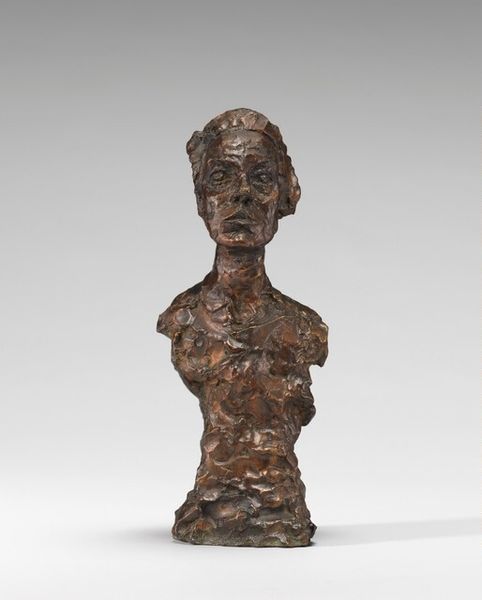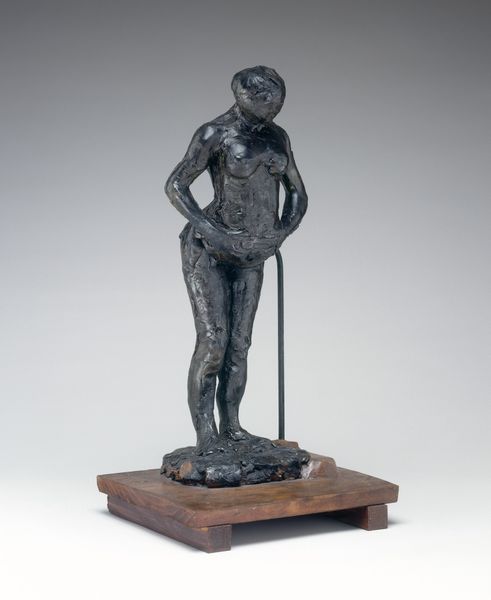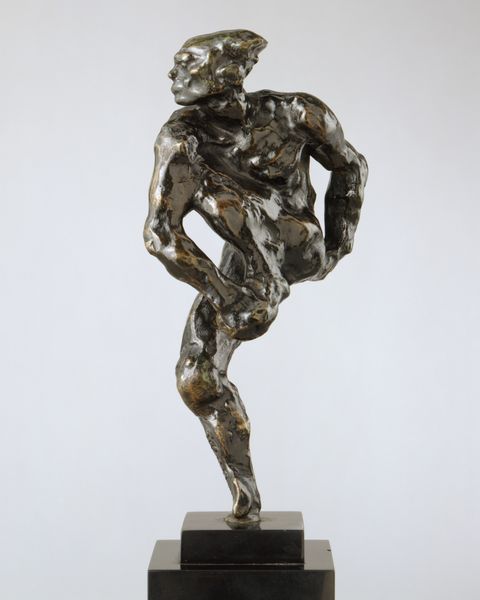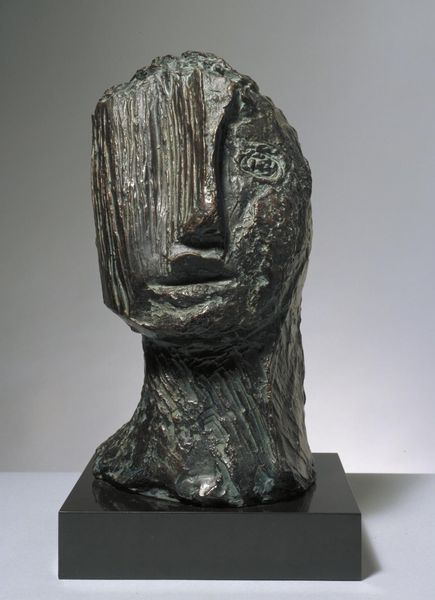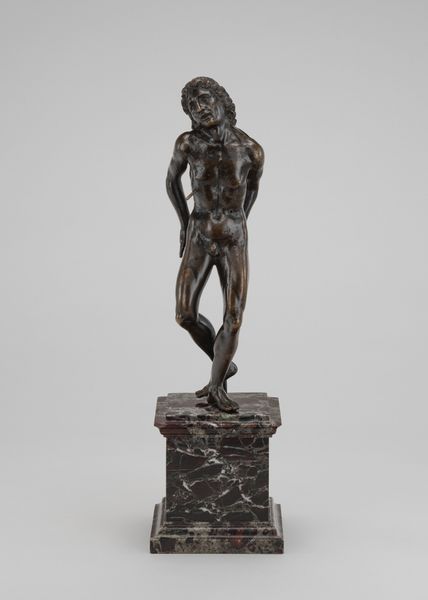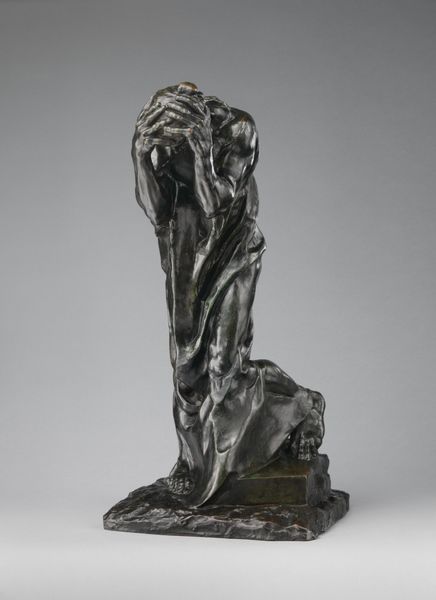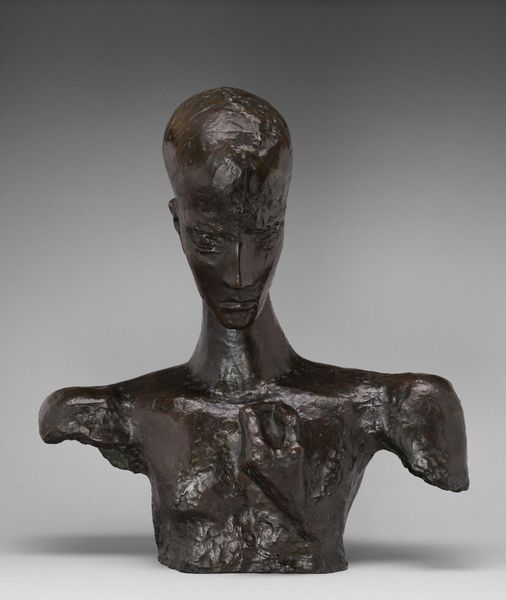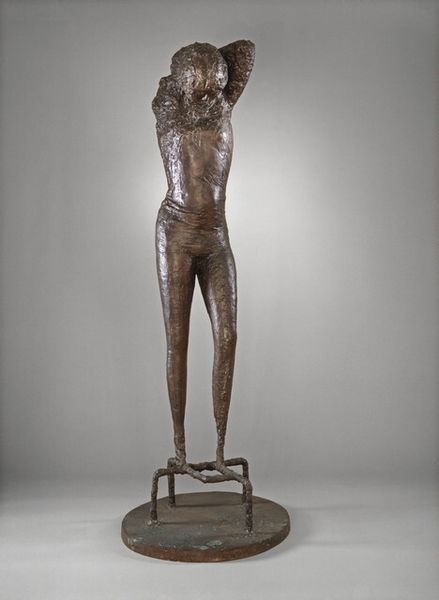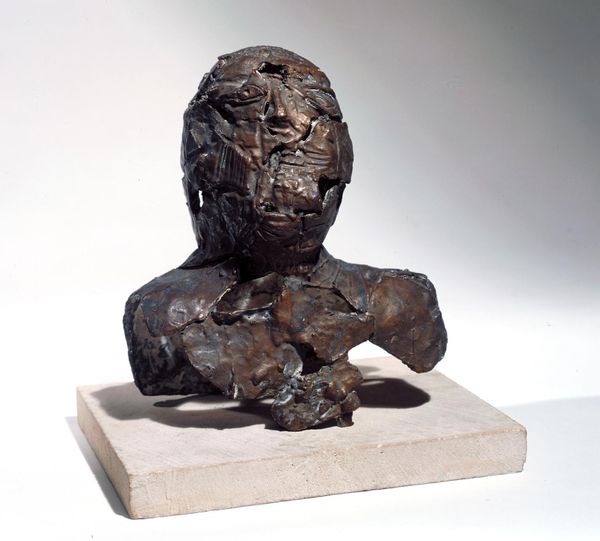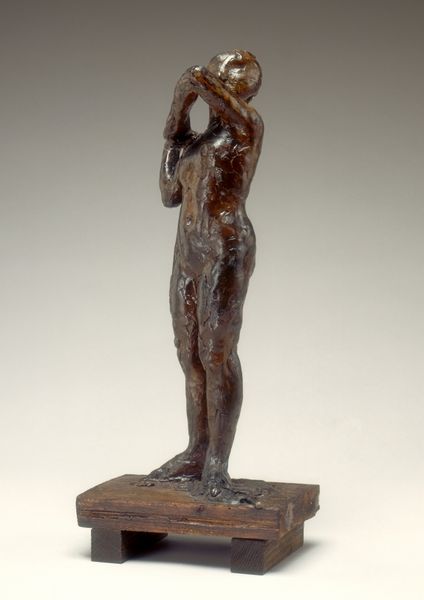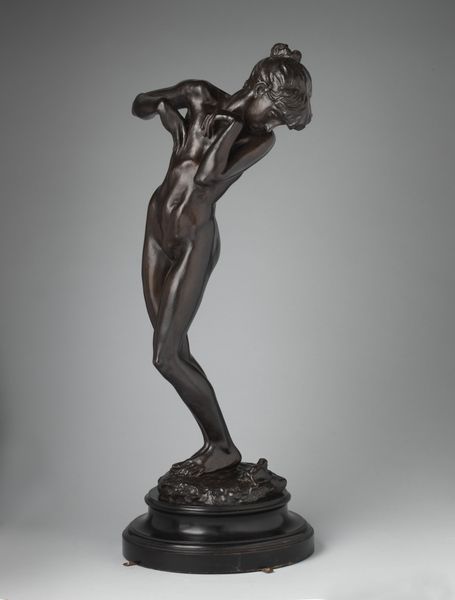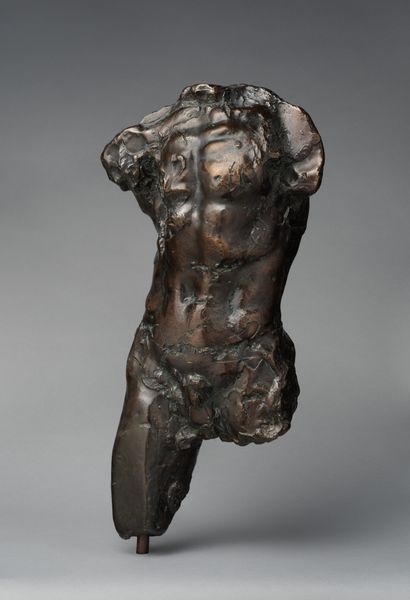
Dimensions: overall: 50.1 x 15.2 x 24.3 cm (19 3/4 x 6 x 9 9/16 in.)
Copyright: National Gallery of Art: CC0 1.0
Curator: Alberto Giacometti's "Kneeling Woman", crafted in bronze in 1956, immediately strikes me. It's unsettling—evokes a sense of solitude or vulnerability, almost spectral in its thinness. Editor: The processes behind Giacometti's signature skeletal figures are worth investigating. He obsessively built up and then scraped away the clay before casting the final bronze, a cycle reflecting the post-war anxiety of existential impermanence and the instability of materials. Curator: Absolutely, it powerfully captures a postwar feeling, perhaps exploring themes of fragility in the human condition, trauma, and the silent strength and sorrow in feminine existence. She almost becomes a monument to resilience. Editor: In that respect, understanding the historical context enriches our view. The labour is evident and reflects not only a physical act but an intellectual one in which ideas about form are pursued, rejected, and layered repeatedly. Giacometti wrestled physically with his medium. Curator: I wonder about Giacometti’s consistent use of the female form in this attenuated state. How might we interpret that recurring visual language through a feminist lens? Does it reinforce an objectification of women or explore a shared space of trauma and empathy? Editor: The social elements present within its creation invite us to explore issues like labour conditions, economic capital, and how those processes directly tie into an artwork's reception. We are still drawn to the materiality here, bronze that has been touched, eroded, reworked, until it transcends merely material existence. Curator: Considering its artistic impact, its radical presentation shattered expectations of conventional sculpture. What might contemporary audiences take away from the sheer vulnerability made tangible through this enduring yet very mortal looking figure? Editor: This sculpture compels us to engage with how artists utilize basic resources—metal, plaster, their own two hands. It’s amazing how art continues generating complex, engaging dialogue about culture, class and gender identity even sixty years later.
Comments
No comments
Be the first to comment and join the conversation on the ultimate creative platform.

